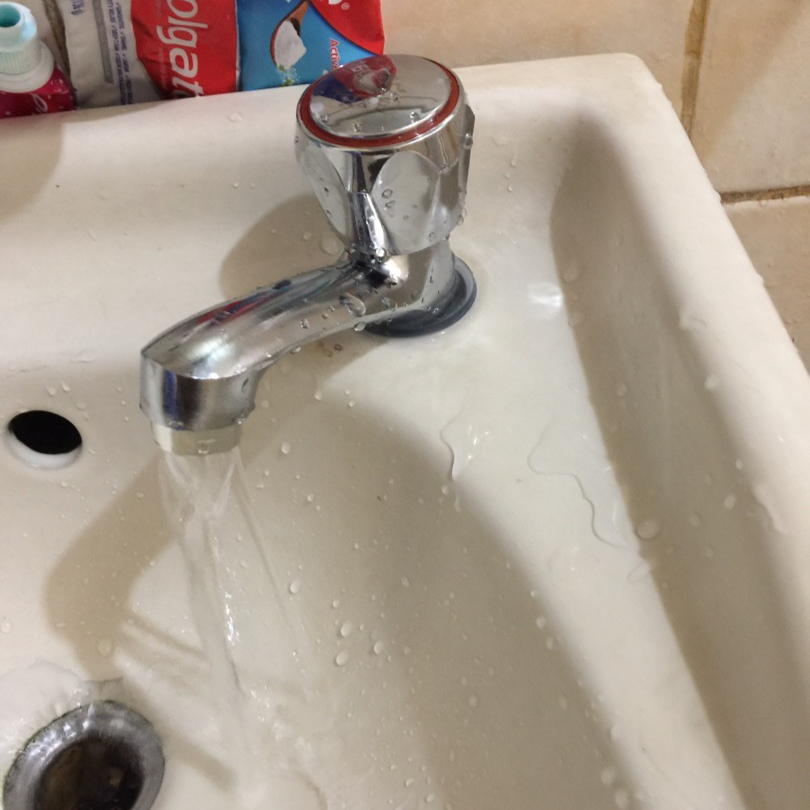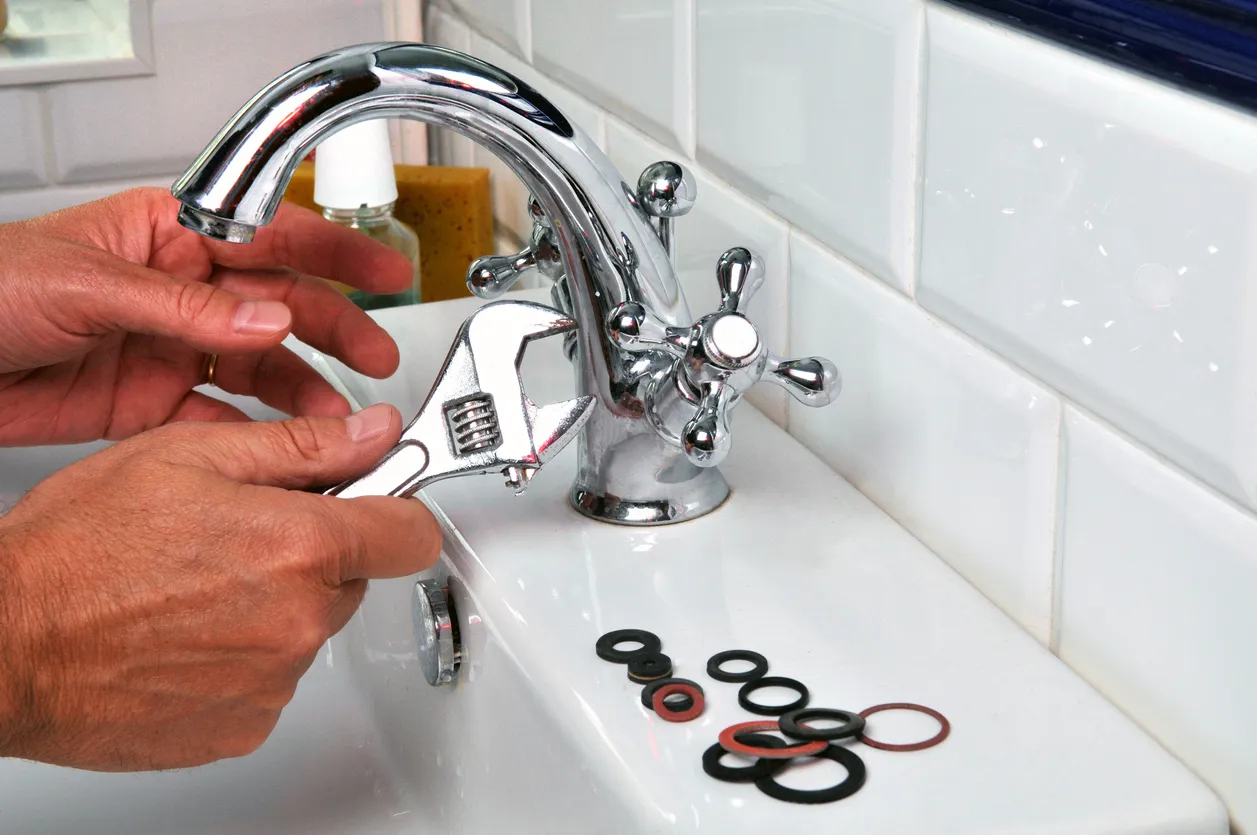How do you feel in regards to 4 Common Reasons for a Leaky Faucet?

Dripping faucets may look like a minor trouble, however their influence exceeds just the nuisance of the sound. From drainage to incurring unneeded monetary prices and health and wellness dangers, disregarding a trickling faucet can lead to numerous effects. In this short article, we'll delve into why it's essential to address this typical family problem quickly and efficiently.
Wastefulness of Water
Ecological Effect
Leaking faucets contribute substantially to water waste. According to the Epa (EPA), a single faucet dripping at one drip per second can squander more than 3,000 gallons of water each year. This not just pressures water sources but additionally affects ecological communities and wild animals based on them.
Financial Expenses
Raised Water Expenses
Beyond the ecological impact, leaking taps can pump up water bills substantially. The accumulated wastage with time converts into greater utility expenses, which might have been prevented with prompt fixings.
Potential Residential Or Commercial Property Damage
Furthermore, extended leaking can cause harm to fixtures and surfaces surrounding the faucet. Water build-up can create discoloration, deterioration, and even architectural issues if left neglected, leading to extra repair costs.
Health Problems
Mold And Mildew and Mildew Development
The consistent existence of moisture from a trickling tap produces an optimal setting for mold and mildew and mildew growth. These fungis not just compromise interior air top quality but likewise position wellness risks, especially for people with respiratory conditions or allergies.
Waterborne Conditions
Stagnant water in leaking faucets can end up being a breeding ground for germs and other microorganisms, raising the threat of waterborne illness. Contaminants such as Legionella germs thrive in stationary water, possibly resulting in significant illnesses when ingested or breathed in.
Do it yourself vs. Professional Repair
Benefits and drawbacks of DIY Fixing
While some may try to fix a leaking tap themselves, DIY repairs include their own set of challenges. Without proper knowledge and devices, do it yourself attempts can aggravate the problem or bring about insufficient repairs, prolonging the problem.
Advantages of Hiring a Professional Plumber
Employing a professional plumber guarantees that the underlying root cause of the leaking faucet is resolved effectively. Plumbing technicians possess the experience and equipment to identify and repair faucet problems successfully, saving time and decreasing the risk of additional damages.
Step-by-Step Guide to Repairing a Dripping Tap
Tools Called for
Prior to attempting to fix a dripping faucet, collect the required tools, including a flexible wrench, screwdrivers, substitute parts (such as washers or cartridges), and plumber's tape.
Usual Faucet Issues and Their Solutions
Identify the sort of tap and the details issue triggering the drip. Usual issues include damaged washing machines, rusty valve seats, or defective O-rings. Describe producer instructions or on the internet tutorials for detailed support on repair services.
Preventive Measures
Routine Upkeep Tips
To stop trickling faucets, perform routine maintenance such as cleaning aerators, evaluating for leakages, and changing worn-out components without delay. Furthermore, consider setting up water-saving devices or upgrading to extra efficient components.
Relevance of Prompt Services
Dealing with leaking faucets as quickly as they're observed avoids additional water waste and prospective damage, eventually conserving both water and money in the future.
Impact on Building Worth
Assumption of Well-Maintained Home
Maintaining a property in good condition, consisting of attending to maintenance concerns like leaking taps, improves its viewed value and value among potential purchasers or occupants.
Influence on Resale Worth
Residences with well-kept plumbing components, including taps, command higher resale values in the real estate market. Resolving dripping taps can contribute to a favorable impression during residential or commercial property examinations and settlements.
Ecological Duty
Individual Payment to Conservation
Taking obligation for repairing trickling faucets lines up with wider efforts toward water preservation and environmental sustainability. Every person's activities jointly make a substantial impact on preserving valuable resources.
Lasting Living Practices
By prioritizing punctual fixings and taking on water-saving routines, individuals contribute to lasting living practices that benefit both existing and future generations.
Final thought
Addressing a dripping faucet goes beyond simple convenience; it's a vital step toward saving water, decreasing monetary expenses, and protecting health and property. Whether with do it yourself fixings or specialist assistance, taking action to fix trickling taps is a tiny yet impactful way to promote responsible stewardship of resources and contribute to a much healthier, extra lasting future.
How to Fix a Leaky Faucet: Step-by-Step Repair Guide
A leaky faucet may seem like a simple annoyance, but if it's not fixed promptly, that leak could cost hundreds to potentially thousands. From water damage to mold, mildew, and high water bills, even a tiny leak can be catastrophic if left unattended. Damage like this can even affect the overall value of your home, so it's important to take the right approach for leaky faucet repair. You may need the help of a plumber in some cases, but we've got a few tips you can try on how to fix a leaky faucet before calling the pros.
Four Faucet Types
When you're learning how to fix a leaky faucet, the first step is knowing what kind of faucet you're working with! There are four common types.
Cartridge Faucets
Cartridge faucets come in one- or two-handled varieties. In one-handled cartridge faucets, hot and cold water combines in a single cartridge. In the two-handled versions, hot and cold water are controlled separately and mixed in the faucet.
Ball Faucets
Ball faucets have a single lever you push up and down to adjust the pressure and rotate to change the temperature. A slotted metal ball controls the amount of water allowed into the spout.
Compression Washer Faucets
They're the oldest type of faucet, but they're still used in many homes — especially older ones. Compression faucets have two separate handles that, when turned, raise or lower the washer that seals a water valve. This valve stops water from flowing through the faucet when it is turned off.
Disc Faucets
Disc faucets rarely need to be repaired due to their maintenance-free design. The water flow is controlled by two discs — the upper one raises and lowers against a fixed lower disc, creating a watertight seal. If your disc faucet starts leaking, you may need to replace the seals or clean residue buildup from the inlets.
Fixing a Leaky Faucet
Step 1: Turn Off the Water
Whether you're learning how to fix a leaky bathtub faucet or how to fix a leaky kitchen faucet, always turn off the water supply to your working area when you're fixing a leak. The last thing you want is a flood added to your list of things to fix.
Look for the shutoff valves below your sink or around the tub and turn them clockwise to stop the water flow. If your faucet doesn't have shutoff valves, you may need to turn off the water for the whole house. Check to make sure it's off by turning the faucet on. If nothing comes out, you're ready to start the repair.
Step 2: Take Apart the Faucet
How you disassemble your faucet depends on the type of fixture you have. You can use a flathead screwdriver to remove the caps on top of the handle or handles for cartridge and compression faucets. Inside, you should see handle screws. Unscrew these with a screwdriver to remove the handle.
Disc- and ball-style faucets will typically have an inlet screw near the handle, and removing that will reveal the interior of the faucet.
Detach the Valve Stem
For cartridge- and compression-style faucets, you'll see the inner valve stem or cartridge once you remove the faucet handles. If you have a compression faucet, unscrew the brass valve stem. If you have a cartridge faucet, pull out the cartridge. If your cartridge has been in place for a while, it may require some tools or extra force to remove it due to mineral deposits.
Examine and Replace Parts
Once you've removed the parts, check them out to confirm what needs to be replaced. You may see corroded rubber washers, O-rings, stems, or cartridges. On a ball-style faucet, check the seats and springs for damage.
If you need to repair a leaky disc faucet, check the inlet and seals on the lower disc.
Once you determine what parts must be replaced, visit your local hardware store. Bring the damaged parts with you to ensure you can purchase the correct components to replace them.
Clean Valves and Faucet Cavity
If you've removed a stem or cartridge, you may notice mineral buildup in the faucet's threads. Use white vinegar to clean the valve seat by soaking it for a few minutes, then scrub it away with a soft toothbrush and rinse with warm water. You can also clean the interior of the faucet in the same way.
Reassemble the Faucet
Once your faucet is cleaned and the required parts have been replaced, it's time to reassemble it. Put the pieces back together and slowly turn the water supply back on. Doing this slowly is crucial because too much initial water pressure can damage the new hardware you've just installed.
https://homewarranty.firstam.com/blog/how-to-fix-leaky-faucet

Do you really like reading up on Why It's Important to Fix Leaky Faucets? Make a remark further down. We would be pleased to find out your views about this content. Hoping to see you back again soon. If you please set aside a second to promote this entry if you appreciated it. Thanks for going through it.